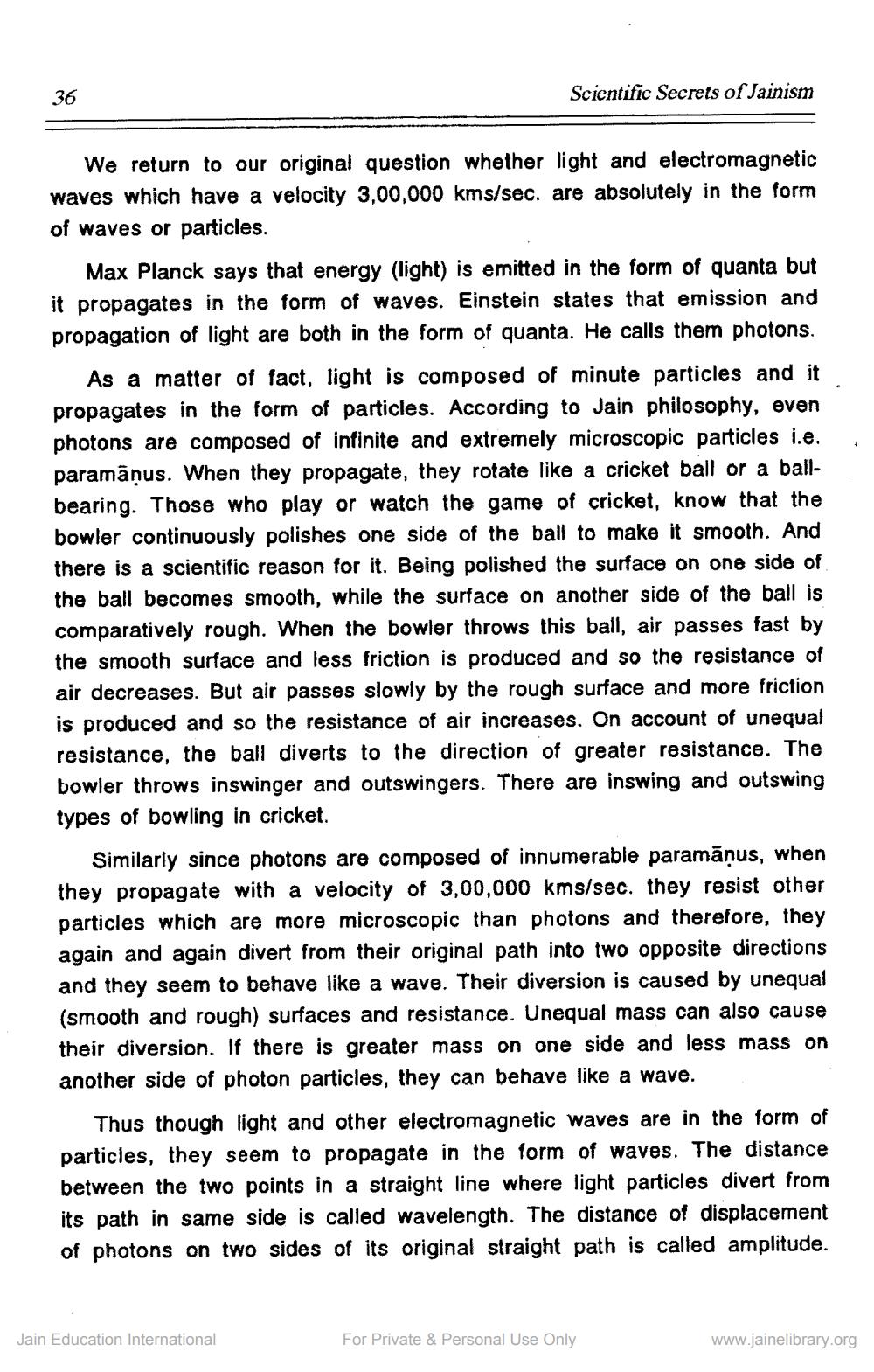________________
36
Scientific Secrets of Jainism
We return to our original question whether light and electromagnetic waves which have a velocity 3,00,000 kms/sec. are absolutely in the form of waves or particles.
Max Planck says that energy (light) is emitted in the form of quanta but it propagates in the form of waves. Einstein states that emission and propagation of light are both in the form of quanta. He calls them photons.
As a matter of fact, light is composed of minute particles and it propagates in the form of particles. According to Jain philosophy, even photons are composed of infinite and extremely microscopic particles i.e. paramāņus. When they propagate, they rotate like a cricket ball or a ballbearing. Those who play or watch the game of cricket, know that the bowler continuously polishes one side of the ball to make it smooth. And there is a scientific reason for it. Being polished the surface on one side of the ball becomes smooth, while the surface on another side of the ball is comparatively rough. When the bowler throws this ball, air passes fast by the smooth surface and less friction is produced and so the resistance of air decreases. But air passes slowly by the rough surface and more friction is produced and so the resistance of air increases. On account of unequal resistance, the ball diverts to the direction of greater resistance. The bowler throws inswinger and outswingers. There are inswing and outswing types of bowling in cricket.
Similarly since photons are composed of innumerable paramānus, when they propagate with a velocity of 3,00,000 kms/sec. they resist other particles which are more microscopic than photons and therefore, they again and again divert from their original path into two opposite directions and they seem to behave like a wave. Their diversion is caused by unequal (smooth and rough) surfaces and resistance. Unequal mass can also cause their diversion. If there is greater mass on one side and less mass on another side of photon particles, they can behave like a wave.
Thus though light and other electromagnetic waves are in the form of particles, they seem to propagate in the form of waves. The distance between the two points in a straight line where light particles divert from its path in same side is called wavelength. The distance of displacement of photons on two sides of its original straight path is called amplitude.
Jain Education International
For Private & Personal Use Only
www.jainelibrary.org




